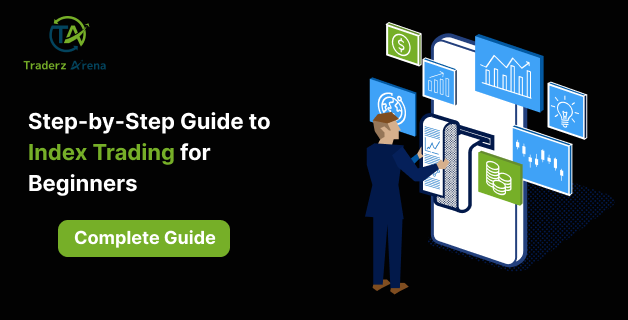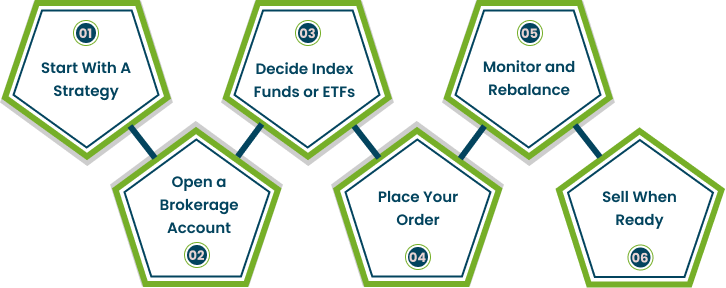
Are you looking to get into trading to build wealth? Index trading is a great place to start. It’s less risky than stock picking and provides solid returns over time. This step-by-step plan will show you how to trade index in India and earn good money next year. Forget day trading, options, and futures for now. Start with the basics.
An index tracks a group of stocks to represent a market or sector. When you buy an index, you get exposure to many companies at once. The Nifty 50 and Sensex are the most popular indices in India. Open a brokerage account, fund it, pick an index ETF or index mutual fund, and you’re ready to buy and sell. Rebalance regularly and stay invested for the long run. If you want to learn index trading from scratch, this guide will walk you through everything you need to know to trade confidently in 2023.
What Is Index Trading?
Index trading means buying and selling stock market indexes instead of individual stocks. An index tracks the performance of a group of stocks to represent an entire market or industry sector.
An Overview of Indexes and How They Work
To understand indexes, you first need to know what a market index is. An index tracks the overall price performance of a group of stocks to give investors an easy way to see how a sector or region is performing. The most well-known indexes are the S&P 500 and the Dow Jones Industrial Average.
How Indexes Work
Indexes work by selecting a group of stocks to represent an entire market or sector. As the prices of these stocks go up and down, the index goes up and down. By buying an index fund, you can invest in the entire index and earn returns that match the overall market.
To trade an index, you have a few options:
- Buy shares of an index fund or ETF that tracks that index. This allows you to invest in the entire index with one purchase.
- Trade index options or futures which allow you to speculate on the price movement of the overall index.
- Buy or short stocks of companies that make up a high percentage of the index. For example, shorting large tech stocks could be a way to short the Nasdaq index.
Step-by-Step Guide to Index Trading for Beginners
To get started with index trading, follow these steps:

- Choose an index to trade: The two most popular indices in India are Nifty 50 and Sensex. Nifty 50 tracks 50 large companies, while Sensex tracks 30 major companies. Pick one based on the types of companies you want exposure to.
- Open a brokerage account: You’ll need an account with a licensed broker to buy and sell index funds or ETFs. Compare brokers to find one with low fees and commissions for the index you want to trade.
- Decide between index funds or ETFs: Index funds and ETFs both track market indices but have different structures. Index funds are priced once a day, while ETFs can be traded instantly like stocks. ETFs may have lower fees but higher commissions. Choose what fits your trading needs.
- Place your order: Once you fund your brokerage account, you can place an order to buy shares of your chosen index fund or ETF. For long-term investing, use a market order. For active trading, use limit orders to specify a target price.
- Monitor and rebalance: Check how your index investment is performing regularly. You may need to buy or sell shares to maintain your target allocation. Rebalance at least once a year or if your allocation gets 5-10% off target.
- Sell when ready: To exit an index position, place a sell order for your shares. You can sell all at once or over time. Consider your investment goals and market conditions to determine the right time to sell.
Strategies and Tips for Success
To succeed at index trading, follow these tips:
Diversify your portfolio
Don’t put all your eggs in one basket. Invest in a variety of indexes like the NSE Nifty 50, BSE Sensex, Nifty Bank, etc. to balance out risk. Indexes in different sectors provide diversification.
Do your research
Study how indexes have performed over time to determine the best ones for your investment goals. Review the costs, standards, and companies that make up the index. The more you know about an index, the better investment decisions you can make.
Invest long-term
Index trading is best suited for long-term investment. Don’t expect to profit quickly. Have patience and think years down the road. Historically, the stock market has always increased in value over the long run. Stay invested and enjoy the gains over time.
Rebalance periodically
Review and rebalance your index investments at least once a year or if there are significant market changes. Make sure your investment mix still aligns with your financial goals. You may need to sell or buy shares of indexes to rebalance.
Keep costs low
Look for low-cost index funds and ETFs. High fees cut into your returns over time. Compare expense ratios to find the most affordable options. Low-cost index investing will help your money go further.
Conclusion
So there you have it, a straightforward plan to get started with index trading in 2023. The key is to start small, learn the ropes, and expand from there. Don’t get overwhelmed by all the options and complexity. If you’re looking to start index trading in 2023, consider joining Traderz Arena. We offer comprehensive courses and training programs to help beginners learn the fundamentals of trading. With their guidance, you can start small, learn the ropes, and gradually expand your trading portfolio. Take the plunge and begin your index trading journey with Traderz Arena!
